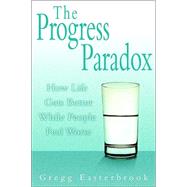
| Introduction | p. xiii |
| The Great Story of Our Era: Average People Better Off | p. 3 |
| Practically Everything Getting Better | p. 35 |
| Why the Good News Scares People | p. 80 |
| Portable Carpeted Dog Steps | p. 121 |
| More of Everything Except Happiness | p. 163 |
| Stress--It's Nature's Plan | p. 188 |
| How to Gain Your Mind | p. 213 |
| Selfish Reasons to Become a Better Person | p. 228 |
| Beyond Credit Cards and SUVs | p. 244 |
| Changing Our World | p. 255 |
| Changing Their World | p. 279 |
| It's Never Too Late | p. 311 |
| Notes | p. 319 |
| Acknowledgments | p. 357 |
| Index | p. 359 |
| Table of Contents provided by Ingram. All Rights Reserved. |
The New copy of this book will include any supplemental materials advertised. Please check the title of the book to determine if it should include any access cards, study guides, lab manuals, CDs, etc.
The Used, Rental and eBook copies of this book are not guaranteed to include any supplemental materials. Typically, only the book itself is included. This is true even if the title states it includes any access cards, study guides, lab manuals, CDs, etc.
Excerpted from The Progress Paradox: How Life Gets Better While People Feel Worse by Gregg Easterbrook
All rights reserved by the original copyright owners. Excerpts are provided for display purposes only and may not be reproduced, reprinted or distributed without the written permission of the publisher.